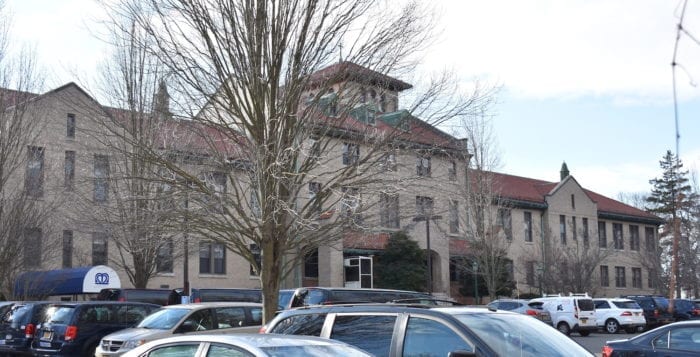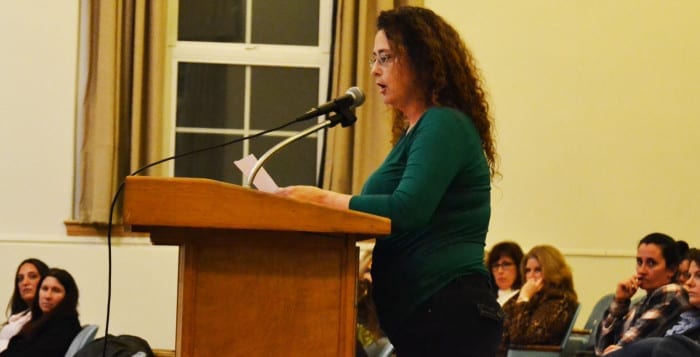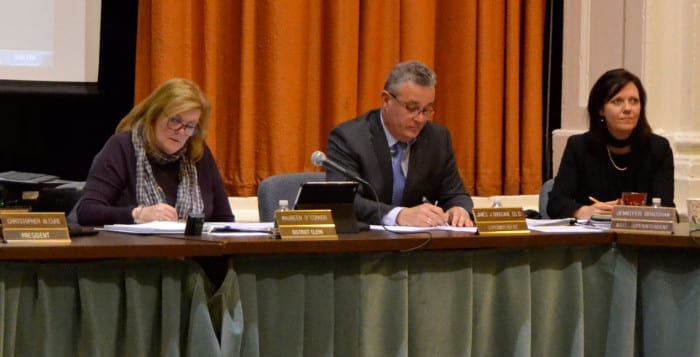The Smithtown school board voted to close Branch Brook Elementary School at a board of education meeting Tuesday, effective June 30, 2017. Five board members, including President Christopher Alcure, were in favor of the closure. Gladys Waldron, the board’s longest tenured member, was responsible for the lone “no” vote.
“For four years we’ve made cuts to the program, and it is not a proposition that I would like to continue,” Alcure said following the meeting. “We have declining enrollment. We have space in other buildings. Due to the fact that Branch Brook is one of the smaller buildings, and in my mindset we needed to close a building, and if we kept that open and closed one of the other ones and we had a sudden, unexpected uptick in enrollment, Branch Brook could not accommodate being one of seven schools. If we have an uptick in enrollment in two or three years when Branch Brook is closed, we’ll be able to absorb about 1,200 kids, and that was my deciding factor.”
Closing at least one elementary school has been an intensely debated issue between the community, the school board and district administration since the middle of November when Superintendent James Grossane presented the findings of a housing committee that was assembled earlier in 2015. Grossane presented the board with five options as cost saving measures.
Closing Branch Brook was a part of four of the five options. Tuesday’s vote sealed the fate of Branch Brook, though Grossane will take his time in selected one of the four options from his November proposal, he said. More debate is still to come about what happens to students in the seven elementary schools that are not closing to make room for those leaving Branch Brook.
With emotions running high and a filled-to-capacity auditorium in the New York Avenue building that serves as district headquarters in Smithtown, the vote was received with anger and sadness from the community.
Katie Healy has been one of the most outspoken Branch Brook parents throughout the process.
“If I choose to stay, I will hold each and every one of you accountable and likely pushing one of you out,” Healy said to the five board members who voted yes. “I will be okay, and I will fight for those that will have a tough time but I will be there to show you that your losses are greater than your gains. If I choose to stay in this state I will hold you accountable…shame on you.”
School board meetings and public work sessions had taken on some added emotion leading up to Tuesday, though emotions boiled over following the vote. One parent was removed by security after the meeting was over after yelling at members of the board. One was warned twice by Grossane for using profanity during her allotted public comment time.
Peter Troiano was one of the parents responsible for the Save Branch Brook movement on Facebook and an Internet petition.
“I’ll keep this quick,” Troiano said Tuesday as he addressed the board. “You’re all incompetent. You shouldn’t have signed up for this job if you couldn’t do it right. You should all be ashamed of yourselves. I don’t know how you sleep at night. You disgust me. And rest assured, this isn’t over. We plan on taking further action so get ready.”
Troiano dropped the microphone to the ground and exited following his comments. He did not immediately respond to a request to elaborate about his future plans.
Waldron defended her position to oppose closing Branch Brook to applause from the hundreds in attendance. The idea of selling the administration building on New York Avenue has been a rallying cry for the Save Branch Brook community members, though little progress has been made.
“The only reason why I am not in favor of closing a school, whether it be Branch Brook or any other school, is that I think our energies and effort of administration and board should be placed right now on the selling of this building,” Waldron said.
The necessity to close a school, according to Grossane and his administration, can be attributed to declining enrollment and revenue. Andrew Tobin, the district’s assistant superintendent for finance and operations, has said in the past that a deficit is on the horizon for the district.
“I can’t tell you that 2017-18 will be the deficit year, but it’s becoming more and more likely as we look out ahead that 2017-18, maybe 2018-19, if we don’t get those type of increases, we know our expenses are going to go up, we’re going to certainly be facing it at some point,” Tobin said at a public work session on Jan. 19.
Grossane responded following the meeting to claims from some community members that the decision to close Branch Brook has been inevitable since his presentation in November.
“This decision wasn’t made months ago,” he said. “It was very careful. It was very measured. The committee did a lot of work. They brought the material. I reviewed it.”
Grossane said that a lot of time and work went into the decision, and that it bothered him that some in the community perceived it differently.
Grossane’s November report estimated that closing an elementary school would save the district about $725,000 annually. Tobin said that Tuesday’s decision should relieve some of the financial trouble that the district is anticipating in the future, though their work is not done.
School board meetings since November have been well attended by parents wearing blue Save Branch Brook T-shirts. They submitted their own sixth option for the board’s consideration, which was assembled by parents in the statistical analysis field. Option 6 concluded that Branch Brook made the least sense for closure of the eight elementary schools, based on projected enrollment decrease over the next 10 years, building occupancy, square foot per student, students per usable classroom and utility cost.
Grossane defended his suggestion that Branch Brook made the most sense for closure at the Jan. 19 work session. Closing Branch Brook would do the least damage to the discrepancy of elementary students being on track to attend either High School East or High School West when they reach ninth grade, according to Grossane’s data. Additionally, because Branch Brook is the smallest of the eight schools in terms of capacity, its closure would leave the district least vulnerable to overcrowding if there were a future increase in enrollment.
Closing Branch Brook should increase average class size, though Grossane called instances where any classes would reach a district implemented maximum of 28 students “outliers,” on Jan. 19.
“Every school has a grade level that runs almost to maximum,” Grossane said. “If we close a building and we operate with seven, those outliers would smooth out. They’d shift. There would still be an outlier occasionally in every building. I’m not going to tell you there isn’t going to be a class in fifth grade that doesn’t have a 28 at some point within the next six years after we close a building, because there definitely will be. But it’s usually one grade per building. Most times, the class averages even out across the district.”
School board member Grace Plourde presented discussions on Feb. 9 from an earlier business affairs meeting regarding the budget for 2016-17. The deficit that Tobin suggested to be on the horizon was not expected to occur for the 2016-17 school year, mainly due to a low number of retirement payments. Tobin said Tuesday that the district is in “golden years for pension reprieve,” though he expects that to change in the near future.
“We may find that we’re not in the kind of trouble that we have been in in prior years,” Plourde said. “Our preliminary budget is looking pretty stable. We’re anticipating that at this point we’re not going to have to make the kinds of painful cuts that we’ve had to make in prior years, but again it’s not because we’re getting the kinds of revenue we need to get.”












